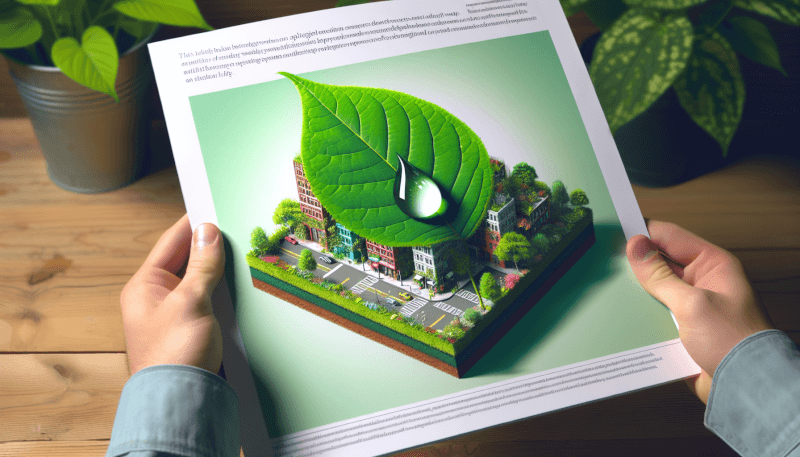You love your urban garden, filled with vibrant plants that bring life and color to your surroundings. But it can be tricky to know exactly how much water your plants need to thrive. Whether you’re a novice gardener or have been tending to your garden for years, understanding the best practices for watering urban garden plants is essential. In this article, we will explore the key principles of proper watering, from choosing the right watering technique to finding the ideal watering schedule, so you can keep your urban oasis thriving and beautiful.

Understanding the Water Needs of Urban Garden Plants
Urban gardening is a rewarding and fulfilling hobby that allows you to bring the beauty of nature into the bustling city environment. Whether you have a small balcony or a rooftop garden, understanding the water needs of your plants is crucial for their health and vitality. Different types of urban garden plants have varying water requirements, and several factors influence these needs. By understanding these factors and signs of underwatering or overwatering, you can ensure that your urban garden thrives.
Different Types of Urban Garden Plants
Urban gardens can accommodate a wide variety of plant species, including flowers, vegetables, herbs, and trees. It’s essential to familiarize yourself with the specific water needs of the plants you choose. Some plants, like succulents and cacti, have adapted to arid conditions and require infrequent watering. On the other hand, leafy greens and flowering plants generally require more water to maintain their lush foliage and blooms. Researching the water requirements of your chosen plants will help you provide optimal care for them.
Factors Influencing Water Needs
Several factors influence the water needs of urban garden plants. Understanding these factors will help you determine the appropriate watering schedule:
Plant Growth Stage: Different growth stages, such as germination, vegetative growth, and flowering, have varying water needs. Younger plants require more water to establish their root systems, while established plants may need less frequent watering.
Weather Conditions: Hot and dry climates typically require more frequent watering, as plants lose moisture through evaporation. On the other hand, cooler and more humid conditions may necessitate less frequent watering.
Soil Type and Drainage: Soil type plays a crucial role in water retention and drainage. Sandy soils drain water quickly, requiring more frequent watering, while clay soils hold water longer, necessitating less frequent watering.
Container Size and Material: The size and material of the containers in your urban garden impact water needs. Smaller containers dry out more quickly and may require more frequent watering, while larger containers retain moisture for longer periods.
Watering Methods: Different watering methods, such as sprinklers, drip irrigation, or hand watering, deliver water at varying rates. Each method affects water absorption and may influence the water needs of your plants.
Signs of Underwatering and Overwatering
It’s essential to pay attention to the signs that your urban garden plants display, as they can indicate whether your plants are receiving too little or too much water. Signs of underwatering include wilting, dry soil, and pale or yellowing leaves. On the other hand, overwatering can lead to root rot, mold growth, and yellowing or drooping leaves. By regularly observing your plants and their responses to watering, you can make adjustments to ensure they receive the proper amount of water.
Determining the Ideal Watering Schedule for Urban Garden Plants
To establish an ideal watering schedule for your urban garden plants, you need to consider the growth stage of your plants, weather conditions, soil type, container size, and watering methods you employ.
Plant Growth Stage
As previously mentioned, different growth stages have varying water requirements. During the germination and early growth stages, plants require consistent moisture to establish their root systems. As they mature, you can gradually reduce the frequency of watering, allowing the top layer of soil to dry out between watering sessions. However, it’s important to monitor your plants individually and adjust the watering schedule accordingly.
Weather Conditions
Hot and dry weather increases water evaporation, leading to higher watering needs. During periods of intense heat or prolonged drought, you may need to water your plants more frequently to prevent dehydration. Conversely, during cooler and more humid conditions, you can reduce the frequency of watering.
Soil Type and Drainage
The type of soil in your urban garden plays a significant role in water retention and drainage. Sandy soils drain quickly, requiring more frequent watering. In contrast, clay soils hold onto moisture for longer periods, requiring less frequent watering. Understanding your soil type will help you determine the appropriate watering schedule for your plants.
Container Size and Material
The size and material of the containers in your urban garden impact water retention. Smaller containers dry out more quickly and may require more frequent watering, while larger containers retain moisture for longer periods. Additionally, containers made of porous materials like terracotta allow water to evaporate faster than plastic or glazed containers. Consider these factors when establishing a watering routine for your plants.
Watering Methods
Different watering methods deliver water at varying rates, affecting the water needs of your plants. Sprinklers provide a uniform distribution of water but may result in wastage due to evaporation. Drip irrigation systems deliver water directly to the plant’s root zone, reducing water loss and ensuring efficient water usage. Hand watering allows for more precise control but may require more time and effort. Choose a watering method that suits your plants’ needs and your urban gardening setup.

Ensuring Proper Watering Techniques for Urban Garden Plants
Proper watering techniques are crucial for the health and vitality of your urban garden plants. By following these techniques, you can optimize water usage and prevent common watering issues.
Watering in the Morning
Watering your plants in the morning is generally recommended over the afternoon or evening. Morning watering allows plants to absorb moisture before the heat of the day, reducing water loss through evaporation. It also gives foliage ample time to dry, reducing the risk of fungal diseases.
Proper Watering Techniques
When watering your urban garden plants, it’s important to apply water directly to the base of the plants rather than overhead. This ensures that the water reaches the root zone efficiently. Avoid splashing water on the leaves, as wet foliage can promote the growth of fungal diseases. Additionally, water deeply but infrequently, allowing the soil to dry out partially between waterings. This encourages the plants to develop strong root systems that can access moisture deeper in the soil.
Testing Soil Moisture
Regularly testing the moisture level of the soil is essential to avoid overwatering or underwatering your plants. You can use a soil moisture meter, your finger, or a small trowel to assess the soil’s moisture content. Insert the meter or your finger into the soil to a depth of a few inches. If the soil feels dry at that depth, it’s time to water.
Avoiding Overhead Watering
As mentioned earlier, overhead watering can lead to the development of fungal diseases. When water is applied to the leaves, it creates a moist environment that encourages fungal growth. To mitigate this risk, use watering methods that deliver water directly to the soil, such as drip irrigation or targeted hand watering.
Deep Watering Methods
Deep watering promotes stronger root growth and reduces water loss through evaporation. Instead of surface watering that barely penetrates the soil, focus on delivering water deep into the root zone. This can be achieved by watering slowly and allowing the water to soak into the soil, ensuring it reaches the roots.
Choosing the Right Watering Tools for Your Urban Garden
Selecting the appropriate watering tools for your urban garden is essential for efficient and effective watering. Here are some tools to consider:
Watering Can
A watering can is a versatile and practical tool for smaller urban gardens. It allows for easy control and precision when watering individual plants. Choose a can with a narrow spout for accurate water distribution.
Hose and Spray Nozzle
A garden hose with a spray nozzle is ideal for larger urban gardens or areas that require extensive watering. A spray nozzle offers various water flow options, ensuring you can adjust the water pressure to meet the needs of different plants.
Drip Irrigation Systems
Drip irrigation systems are a highly efficient watering method for urban gardens. They deliver water directly to the plant’s root zone, minimizing water loss through evaporation. Install a drip irrigation system in your garden to automate the watering process and ensure consistent and optimal moisture levels for your plants.
Self-Watering Containers
Self-watering containers have built-in reservoirs that supply water to the plants as needed. These containers are an excellent option for urban gardeners who may have limited time for regular watering. Self-watering containers keep the soil consistently moist, reducing the risk of underwatering or overwatering.
Watering Timer
A watering timer is a valuable tool for busy urban gardeners. It allows you to set specific watering schedules, ensuring your plants receive water even when you’re away. Connect the timer to your watering system, and it will automatically turn on and off at the designated times.

Utilizing Efficient Irrigation Techniques for Urban Garden Plants
In addition to proper watering techniques, implementing efficient irrigation techniques can further optimize water usage in your urban garden and promote plant health.
Installing a Rain Barrel
Installing a rain barrel in your urban garden is an eco-friendly way to collect and utilize rainwater. As a sustainable water source, rainwater can supplement your regular watering routine, reducing your reliance on municipal water supplies.
Using Mulch to Conserve Moisture
Mulching the soil surface helps retain moisture, suppress weeds, and regulate soil temperature. Apply a layer of organic mulch, such as wood chips or straw, around the base of your plants. This prevents water evaporation and promotes healthy root development.
Implementing a Micro-Irrigation System
A micro-irrigation system is an efficient way to deliver water directly to the root zone. This system uses small tubes or drippers to supply a slow and targeted flow of water. By reducing water loss through evaporation and runoff, micro-irrigation systems help conserve water in your urban garden.
Grouping Plants with Similar Water Needs
Grouping plants with similar water needs together in your urban garden can streamline your watering routine. This practice ensures that plants with higher or lower water requirements receive appropriate amounts of water. By creating microclimates within your garden, you can provide optimal conditions for each group of plants.
Understanding the Importance of Proper Drainage for Urban Garden Plants
Proper drainage is essential to prevent waterlogging and ensure the health of your urban garden plants. Here are some factors to consider:
Choosing the Right Containers
When selecting containers for your urban garden, choose ones with proper drainage holes. Containers without drainage holes can lead to water pooling at the bottom, creating an inhospitable environment for plant roots. Ensure that the containers you choose have adequate drainage to allow excess water to escape.
Adding Drainage Holes
If you have containers without drainage holes, you can add them yourself. Use a drill or a hammer and nail to create several small drainage holes at the bottom of the container. This allows excess water to escape, preventing the roots from sitting in stagnant water.
Using Well-Draining Soil Mix
Using well-draining soil mix is crucial for promoting proper drainage in your urban garden. Avoid heavy, compacted soil that retains water, as it can lead to waterlogged roots. Instead, opt for a mix that includes materials like perlite or vermiculite, which enhance drainage and aeration.
Elevating Containers
Elevating containers slightly above the ground can improve drainage by allowing excess water to flow out from under the pots. You can use pot feet or small wooden blocks to lift the containers. This prevents water from pooling and promotes air circulation around the container.
Avoiding Waterlogging
Waterlogging occurs when water accumulates in the soil and saturates the plant’s root zone. This can lead to root rot and suffocate the plant. By implementing proper drainage measures, monitoring watering practices, and selecting well-draining soil, you can prevent waterlogging and ensure the health of your urban garden plants.

Conserving Water in Urban Garden Settings
Conserving water in your urban garden is not only environmentally responsible but also cost-effective. Here are some techniques to help you save water:
Collecting and Reusing Rainwater
As mentioned earlier, installing a rain barrel allows you to collect rainwater for use in your garden. Instead of relying solely on municipal water supplies, you can supplement your watering routine with the collected rainwater, reducing your water consumption.
Using Water-Saving Techniques
Employing water-saving techniques can significantly reduce water usage in your urban garden. Examples include watering plants only when necessary, adjusting watering schedules based on weather conditions, and avoiding overwatering. Additionally, grouping plants with similar water needs together and using efficient irrigation systems can further optimize water usage.
Using Drought-Tolerant Plants
Choosing drought-tolerant plants for your urban garden can significantly reduce water requirements. These plants are adapted to survive with minimal water and can withstand dry conditions. Research and select appropriate drought-tolerant plant species for your garden to conserve water without sacrificing the beauty and variety of your urban oasis.
Mulching to Retain Moisture
Applying a layer of mulch around the base of your plants helps retain moisture in the soil, reducing the frequency and amount of watering required. Mulch acts as a barrier, preventing water evaporation and maintaining soil moisture levels. This conserves water and promotes healthier plants.
Regular Maintenance
Regular maintenance of your urban garden is essential for water conservation. Remove weeds that compete with your plants for water and nutrients. Prune or thin out overcrowded vegetation to ensure optimal air circulation and avoid excess water consumption. Proper maintenance practices help optimize water usage and promote plant health.
Troubleshooting Common Watering Issues in Urban Gardens
Despite your best efforts, you may encounter common watering issues in your urban garden. Here are some troubleshooting tips:
Addressing Plant Wilting
Wilting is often a sign of underwatering, where the plant is not receiving enough moisture to sustain itself. Ensure that you’re watering your plants deeply enough and adjusting the frequency based on their needs. If wilting persists, check the soil moisture and adjust your watering routine accordingly.
Dealing with Water-Stressed Plants
Water-stressed plants may exhibit yellowing or browning of leaves or slower growth. These signs indicate that the plants are not receiving adequate water. Increase the frequency or duration of your watering sessions and monitor the plants’ response. Adjustments may be necessary to ensure they receive the right amount of water.
Preventing Root Rot
Root rot occurs when the roots are continuously exposed to excess moisture, leading to decay and fungal growth. To prevent root rot, ensure proper drainage by using containers with enough drainage holes, well-draining soil, and avoiding overwatering. Additionally, regularly inspect your plants for signs of rot and take prompt action if needed.
Managing Soil Compaction
Compacted soil can prevent water from penetrating the root zone effectively. Loosen compacted soil by gently cultivating or aerating the top layer with a garden fork or small trowel. This helps improve water infiltration and absorption.
Preventing Nutrient Leaching
Excessive watering or heavy rainfall can cause nutrients to leach out of the soil, depriving your plants of essential elements. To prevent nutrient leaching, consider using slow-release fertilizers or organic compost that gradually releases nutrients over time. Additionally, monitor the moisture level of the soil to ensure you’re not overwatering and flushing away valuable nutrients.
Implementing an Efficient Watering Routine for Your Urban Garden
To ensure an efficient watering routine for your urban garden, follow these guidelines:
Creating a Watering Schedule
Establishing a watering schedule based on the factors discussed earlier will provide consistency and help prevent both underwatering and overwatering. Consider the specific needs of your plants, the climate in your area, and adjust the schedule as necessary.
Monitoring Water Consumption
Regularly monitor your water consumption to gauge the effectiveness of your watering routine. Track how much water your garden requires and make adjustments accordingly. This can be done by measuring water usage through a meter or by observing your water bills.
Adapting to Changing Conditions
Stay flexible and adapt your watering routine to changing weather conditions. Hotter and drier periods may require more frequent watering, while cooler and more humid periods may require less. Additionally, adjust your watering schedule according to the growth stage and individual needs of your plants.
Consistency and Observation
Consistency is key when it comes to watering your urban garden. Maintain a regular watering routine to provide a stable environment for your plants. Continuously observe your plants and monitor their responses to watering. Adjustments may be necessary as your plants grow and environmental conditions change.
Conclusion
Mastering the art of watering urban garden plants is essential for their health and success. By understanding the water needs of different plants, considering factors like growth stage, weather conditions, soil type, container size, and employing proper watering techniques, you can ensure that your urban garden thrives. Choose the right watering tools, implement efficient irrigation techniques, promote proper drainage, and conserve water for a sustainable and beautiful urban garden. With a well-planned watering routine and regular maintenance, your urban garden will flourish, providing you with a serene oasis amidst the bustling cityscape. Happy gardening!


